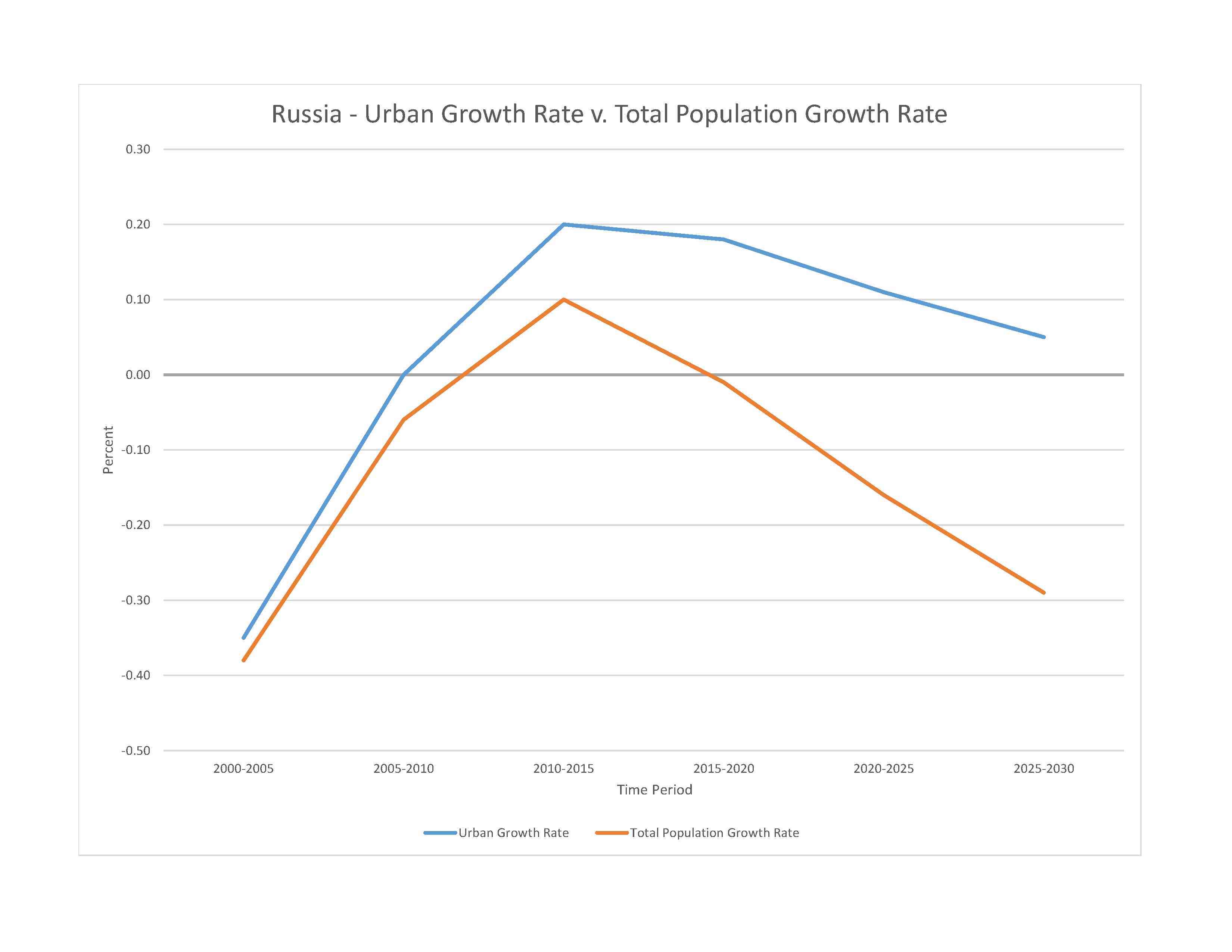
141,698,923 (2023 est.)
noun: Russian(s)
adjective: Russian
Russian 77.7%, Tatar 3.7%, Ukrainian 1.4%, Bashkir 1.1%, Chuvash 1%, Chechen 1%, other 10.2%, unspecified 3.9% (2010 est.)
note: nearly 200 national and/or ethnic groups are represented in Russia's 2010 census
Russian (official) 85.7%, Tatar 3.2%, Chechen 1%, other 10.1%; note - data represent native language spoken (2010 est.)
major-language sample(s):
Книга фактов о мире – незаменимый источник базовой информации. (Russian)
The World Factbook, the indispensable source for basic information.
Russian audio sample:
Russian Orthodox 15-20%, Muslim 10-15%, other Christian 2% (2006 est.)
note: estimates are of practicing worshipers; Russia has large populations of non-practicing believers and non-believers, a legacy of over seven decades of official atheism under Soviet rule; Russia officially recognizes Orthodox Christianity, Islam, Judaism, and Buddhism as the country's traditional religions
0-14 years: 16.86% (male 12,270,830/female 11,614,990)
15-64 years: 65.99% (male 45,292,734/female 48,217,551)
65 years and over: 17.15% (2023 est.) (male 8,008,126/female 16,294,692)
total dependency ratio: 50
youth dependency ratio: 26.6
elderly dependency ratio: 23.4
potential support ratio: 4.3 (2021 est.)
total: 41.5 years (2023 est.)
male: 39 years
female: 44.2 years
-0.48% (2023 est.)
8.5 births/1,000 population (2023 est.)
14.1 deaths/1,000 population (2023 est.)
0.8 migrant(s)/1,000 population (2023 est.)
population is heavily concentrated in the westernmost fifth of the country extending from the Baltic Sea, south to the Caspian Sea, and eastward parallel to the Kazakh border; elsewhere, sizeable pockets are isolated and generally found in the south
urban population: 75.3% of total population (2023)
rate of urbanization: 0.11% annual rate of change (2020-25 est.)

12.680 million MOSCOW (capital), 5.561 million Saint Petersburg, 1.695 million Novosibirsk, 1.528 million Yekaterinburg, 1.292 million Kazan, 1.251 million Nizhniy Novgorod (2023)
at birth: 1.06 male(s)/female
0-14 years: 1.06 male(s)/female
15-64 years: 0.94 male(s)/female
65 years and over: 0.49 male(s)/female
total population: 0.87 male(s)/female (2023 est.)
25.2 years (2013 est.)
14 deaths/100,000 live births (2020 est.)
total: 6.6 deaths/1,000 live births (2023 est.)
male: 7.2 deaths/1,000 live births
female: 5.9 deaths/1,000 live births
total population: 72 years (2023 est.)
male: 67.2 years
female: 77.2 years
1.51 children born/woman (2023 est.)
0.74 (2023 est.)
68% (2011)
note: percent of women aged 15-44
improved: urban: 99.1% of population
rural: 93.1% of population
total: 97.6% of population
unimproved: urban: 0.9% of population
rural: 6.9% of population
total: 2.4% of population (2020 est.)
7.6% of GDP (2020)
3.82 physicians/1,000 population (2020)
7.1 beds/1,000 population (2018)
improved: urban: 95.2% of population
rural: 72.3% of population
total: 89.4% of population
unimproved: urban: 4.8% of population
rural: 27.7% of population
total: 10.6% of population (2020 est.)
degree of risk: intermediate (2023)
food or waterborne diseases: bacterial diarrhea
vectorborne diseases: Crimean-Congo hemorrhagic fever, tickborne encephalitis
23.1% (2016)
total: 7.29 liters of pure alcohol (2019 est.)
beer: 3.04 liters of pure alcohol (2019 est.)
wine: 0.97 liters of pure alcohol (2019 est.)
spirits: 3.16 liters of pure alcohol (2019 est.)
other alcohols: 0.12 liters of pure alcohol (2019 est.)
total: 26.8% (2020 est.)
male: 40.8% (2020 est.)
female: 12.8% (2020 est.)
N/A
53.1% (2023 est.)
women married by age 15: 0.3%
women married by age 18: 6.2% (2017 est.)
3.7% of GDP (2020 est.)
definition: age 15 and over can read and write
total population: 99.7%
male: 99.7%
female: 99.7% (2018)
total: 16 years
male: 16 years
female: 16 years (2019)
NOTE: The information regarding Russia on this page is re-published from the 2024 World Fact Book of the United States Central Intelligence Agency and other sources. No claims are made regarding the accuracy of Russia 2024 information contained here. All suggestions for corrections of any errors about Russia 2024 should be addressed to the CIA or the source cited on each page.
This page was last modified 04 May 24, Copyright © 2024 ITA all rights reserved.